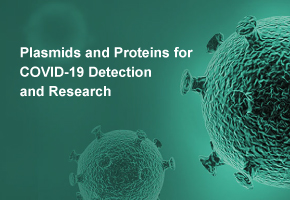Nanobody-based Diagnostic Tools: Revolutionizing Sensitivity in Diagnostic Assays
In the rapidly advancing field of medical diagnostics, the emergence of nanobody-based tools marks a significant leap forward. Nanobodies, the smallest fragment of antibodies derived from camelids, are transforming the landscape of diagnostic assays with their unique properties. These single-domain antibodies offer unparalleled advantages in sensitivity, stability, and specificity, making them ideal for the development of next-generation diagnostic tools.
The Unique Advantages of Nanobodies in Diagnostics
The compact size of nanobodies allows for deeper tissue penetration and better antigen binding, especially in dense or difficult-to-reach areas. This quality is particularly beneficial in diagnostic imaging, where it is crucial to detect pathologies at the earliest stage. Moreover, their small size and simple structure make nanobodies easier to produce and modify compared to traditional antibodies, significantly reducing the time and cost involved in diagnostic tool development.
Another notable advantage of nanobodies is their exceptional stability. They remain functional under harsh conditions, such as extreme pH and temperatures, which often render conventional antibodies ineffective. This resilience makes nanobodies ideal for use in various assay formats and in regions where cold-chain storage is not feasible.
Nanobodies in Cancer Detection and Monitoring
In oncology, nanobody-based diagnostic tools are proving to be a game-changer. Their ability to precisely target tumor-specific antigens enables the early detection of cancerous cells. This precision is crucial not only for early diagnosis but also for monitoring the progression and response to treatment in cancer patients. Nanobody-based imaging agents, tagged with radioactive or fluorescent labels, can highlight tumor cells with high specificity, aiding in more accurate staging and treatment planning.
Nanobodies in Infectious Disease Diagnosis
The role of nanobodies in infectious disease diagnostics is equally promising. They can be engineered to detect a wide range of pathogens with high specificity, from bacteria and viruses to parasites. In the context of global health emergencies, such as the COVID-19 pandemic, nanobody-based rapid tests offer a faster, more sensitive alternative to conventional testing methods, enabling timely disease management and control.
Nanobodies in Autoimmune and Neurological Disorders
The diagnostic potential of nanobodies extends to autoimmune and neurological disorders as well. By targeting specific biomarkers associated with these diseases, nanobodies can aid in their early diagnosis and in monitoring disease progression. For neurological conditions, where diagnostic challenges are often compounded by the blood-brain barrier, nanobodies offer a novel approach to detect biomarkers within the central nervous system.
Advances and Future Prospects
The versatility of nanobodies is further enhanced by recent advances in biotechnology, such as phage display technology, which allows for the rapid selection and optimization of nanobodies for specific targets. This technology paves the way for the custom development of nanobodies for a vast array of diseases.
As research continues, the future of nanobody-based diagnostic tools looks promising. These tools are not only expected to enhance the accuracy and speed of disease diagnosis but also to play a pivotal role in personalized medicine, where diagnostics are tailored to individual patient profiles.
The development of sensitive diagnostic assays using nanobodies represents a major advancement in the field of medical diagnostics. With their unique properties and growing applications, nanobodies are set to redefine the standards of sensitivity, specificity, and efficiency in diagnostic technologies, ultimately improving patient outcomes and advancing healthcare globally.
- Like (1)
- Reply
-
Share
About Us · User Accounts and Benefits · Privacy Policy · Management Center · FAQs
© 2025 MolecularCloud




